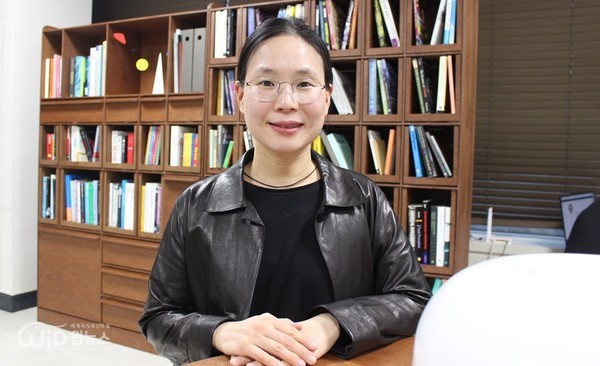Art Blending into Everyday Life: Designing Human-Centered Robots
Dr. Sona Kwak’s Vision: Robots and Art Transforming Human Lives Redesigning Everyday Life and Culture Through Robotic Environments

“A Stage for Disruptive Innovation” - G-Artience 2024 Connecting Week
Breaking away from conventional formalities the G-Artience 2024 Connecting Week redefined the concept of an international event. No VIP seating no formal introductions no ceremonial speeches—only a stage where innovation and fusion thrived.
Held from December 1 to 3 at the Daejeon Convention Center and WIP Square this international event aimed to merge science technology and cultural arts. Co-hosted by KAIST the Nam June Paik Art Center and the Daejeon Tourism Organization G-Artience 2024 sought to become a global hub for TechArt through creative innovation and interdisciplinary collaboration.
This event went beyond being a mere celebration marking the beginning of a new era where science and art converge to design the future. Amid global attention G-Artience 2024 is poised to establish South Korea as the epicenter of TechArt innovation.
Designing Robots for Everyday Life
Dr. Sona Kwak of the Intelligent and Interaction Research Center at the Korea Institute of Science and Technology (KIST) envisions a future where art and technology blend seamlessly into daily life through human-centered robots. Since her days as a student in KAIST’s Industrial Design program Dr. Kwak has been steadfast in her belief that robots would become deeply integrated into human lives. Her research focuses on designing robots that interact and emotionally connect with people.
Dr. Kwak’s early projects include the social robot Haemi designed to express emotions to distant individuals and Meong Robot which uniquely displayed emotional reactions by turning blue when it heard harsh words. These projects highlighted her innovative approach to combining technology with human empathy.
Tools for Humans: Fusing Technology and Emotion
Dr. Kwak emphasizes creating intelligent tools that assist humans rather than robots that mimic human behavior. “When humans wanted to move faster they didn’t mimic horses—they invented cars” she explained highlighting that robots should evolve as tools to meet human needs effectively.
Her research integrates robotic technology into various everyday products to offer new user experiences. Examples include educational tools that combine robotic blocks to produce Korean phonemes creative learning kits merging origami with robotic modules and transformable robotic furniture like OObot. Her work bridges technology art and practicality earning attention for innovations like a robotic library where chairs shelves and desks collaborate to provide optimal services based on user needs.
A New Intersection of Robots and Art
Dr. Kwak explores how robotic technology enhances human environments and reshapes culture. Despite potential resistance from traditional artists she has found her own way to merge industry and art.
As a speaker at the Masters Talk during G-Artience 2024 Connecting Week Dr. Kwak remarked “While I wouldn’t boldly call what I do ‘art’ perhaps we could describe it as ‘art blending into everyday life.’” Her presentation offers a new perspective on how technology and art can collaboratively shape the future.
A Revolution Toward a Global TechArt Hub
Under the theme of blending science technology and cultural arts G-Artience 2024 broke away from traditional norms opening new horizons. From the symphonic opening displayed on a 75-meter LED screen to vision lectures and creative performances attendees experienced the awe-inspiring synergy of science and art.
Event highlights included AI avatar dances virtual idol EDM performances and a collaborative TechArt vision designed by experts from 13 countries. These elements underscored South Korea’s leadership in pioneering TechArt and its bold steps toward establishing itself as a global hub in this revolutionary field.


Website: : http://www.wip-news.com/news/articleView.html?idxno=26309
